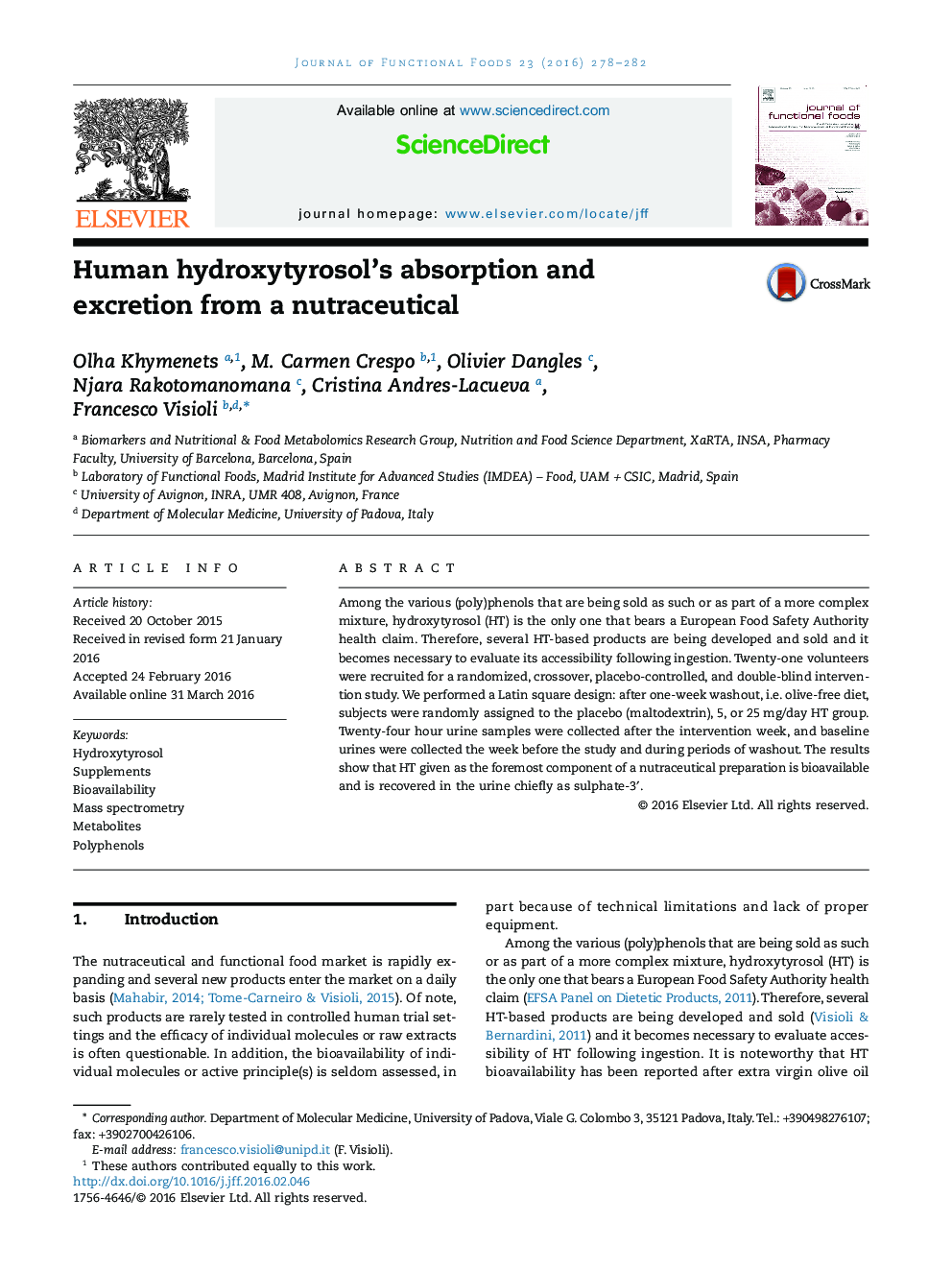| کد مقاله | کد نشریه | سال انتشار | مقاله انگلیسی | نسخه تمام متن |
|---|---|---|---|---|
| 1219506 | 1494543 | 2016 | 5 صفحه PDF | دانلود رایگان |
• It is important to evaluate hydroxytyrosol's bioavailability in humans.
• Hydroxytyrosol, given as component of a nutraceutical, is dose-dependently excreted.
• Hydroxytyrosol's main metabolite is its 3′-sulphate.
• Future hydroxytyrosol-based nutraceuticals should assess its accessibility.
Among the various (poly)phenols that are being sold as such or as part of a more complex mixture, hydroxytyrosol (HT) is the only one that bears a European Food Safety Authority health claim. Therefore, several HT-based products are being developed and sold and it becomes necessary to evaluate its accessibility following ingestion. Twenty-one volunteers were recruited for a randomized, crossover, placebo-controlled, and double-blind intervention study. We performed a Latin square design: after one-week washout, i.e. olive-free diet, subjects were randomly assigned to the placebo (maltodextrin), 5, or 25 mg/day HT group. Twenty-four hour urine samples were collected after the intervention week, and baseline urines were collected the week before the study and during periods of washout. The results show that HT given as the foremost component of a nutraceutical preparation is bioavailable and is recovered in the urine chiefly as sulphate-3′.
Journal: Journal of Functional Foods - Volume 23, May 2016, Pages 278–282
